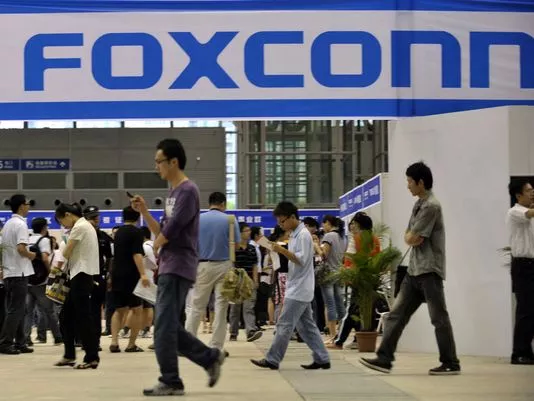Before Wisconsin, Foxconn Vowed Big Spending in Brazil. Few Jobs Have Come.
富士康中國制造模式海外遇挫
Source: The New York Times September 21, 2017
來源:2017年9月21日,《紐約時報》
Before the Taiwanese manufacturing giant Foxconn pledged to spend $10 billion and create 13,000 jobs in Wisconsin, the company made a similar promise in Brazil.
臺灣制造業(yè)巨頭富士康承諾,在威斯康星州投資100億美元,以創(chuàng)造1.3萬個工作崗位。此前,該公司曾在巴西做出過類似的承諾。
At a news conference in Brazil, Foxconn officials unveiled plans to invest billions of dollars and build one of the world's biggest manufacturing hubs in the state of São Paulo. The government had high expectations that the project would yield 100,000 jobs.
當時,富士康的高管們在巴西的一個新聞發(fā)布會上公布了相關計劃,說會在圣保羅州投資數(shù)十億美元,建設一個在世界范圍內(nèi)都屬于頂級規(guī)模的制造中心。巴西政府曾對該項目寄予厚望,希望它能創(chuàng)造十萬個工作機會。
Six years later, Brazil is still waiting for most of those jobs to materialize.
六年后,巴西依然在翹首期盼大部分相關工作崗位的出現(xiàn)。

Foxconn's experience in Brazil and other parts of the world illustrates how difficult it has been for it to replicate its enormously successful Chinese manufacturing model elsewhere.
富士康在巴西及世界各地的經(jīng)歷表明,它很難在其他地方復制自己異常成功的中國制造模式。
In China, Foxconn has built vast factories backed by large government subsidies. Its operations —assembling iPhones for Apple, Kindles for Amazon and PlayStations for Sony—employ legions of young assembly-line workers who often toil 60 hours a week for about $2.50 an hour.
在中國,富士康依靠政府的巨額補貼建立了很多工廠。它的工廠會為蘋果(Apple)裝配iPhone,為亞馬遜(Amazon)裝配Kindle,為索尼(Sony)裝配PlayStations,它雇用了大批年輕的裝配線工人,他們常常每周辛苦地工作60個小時,時薪約為2.5美元。
But the model does not translate easily to other countries, where Foxconn must navigate different social, political and labor conditions.
但這種模式很難用到其他國家,富士康必須適應不同國家的社會、政治和勞動條件。
The global supply chain for electronics remains firmly rooted in Asia, where advantages like low-cost labor and an abundance of skilled engineers have been crucial to the region's development as a manufacturing base.
電子產(chǎn)品的全球供應鏈依然深深扎根在亞洲,那里的低成本勞動力和大量熟練工程師等優(yōu)勢對于該地區(qū)作為制造基地的發(fā)展至關重要。











